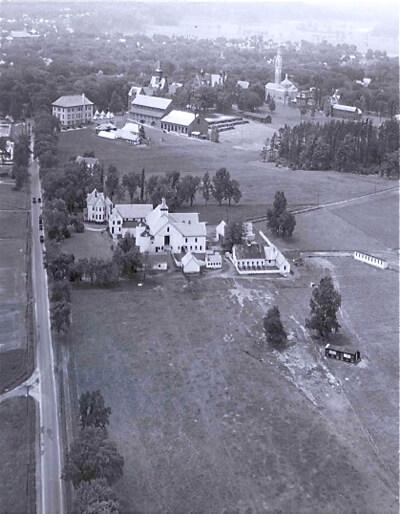UVM Farms history is marked by several location changes amid vocal involvement by Vermont farmers and citizens, so its current renovation and reorganization is in keeping with its agricultural legacy.
The state agricultural college existed for nearly 25 years before it even had a farm.
The Vermont Agricultural Experiment Station was formed by an act of the state legislature in 1886 after two years of wrangling with farmers over a fertilizer analysis facility. By the next year, 14 states had ag. experiment stations that analyzed soils and fertilizers, did comparison trials, identified plant and insects and such. That year Congress passed the Hatch Act originally promising $15,000 annually to universities that established agricultural experiment stations, and ever since appropriating funds for Ag. Experiment Station research.
But it wasn’t until that Hatch money arrived, that UVM trustees actually purchased a farm, according to UVM history accounts. The university farm established on upper Main Street in 1891 served the Agricultural Experiment Station for 75 years. In the early 1900s it operated from its own resources, until 1927-28 when it received state funding. By 1937 the state funding matched federal research funds “and by 1940 the land-grant units…received nearly $300,000 in federal funds in addition to the original land-grant funds,” wrote Robert Sinclair in “The University of Vermont the First Two Hundred Years.”
The post-World War II years saw the heyday of UVM Farms expansion. Stately (but small by today’s standards) Morrill Hall was the center for administration, the experiment station, Extension Service and home economics, not to mention a creamery and fertilizer, seed- and feed-testing lab until the late 1940s, when several campus buildings rose to serve the Agricultural College along with a poultry plant, greenhouses and the agricultural engineering building. That’s also when the Hoag Farm on Spear Street was purchased. The College also took over the Morgan Horse Farm in 1951 and purchased the farm that has become the horticultural research farm in 1952.
It was the 1960s when the College built the Spear Street dairy complex with about $600,000 in state appropriations. In the decades since, Agricultural Experiment Station research has taken place, not just in one building or “station,” but also on the farms and in laboratories throughout the campus and the state of Vermont.
See related stories: "Herd Sale is One Step Toward On-Farm Research and "UVM On-Farm Research Leads in Several Areas".
